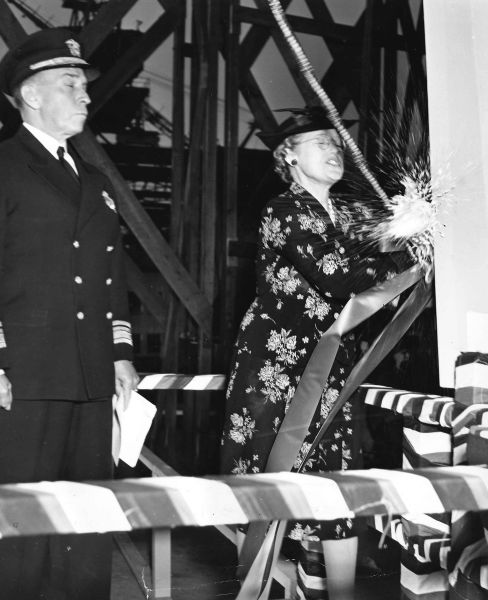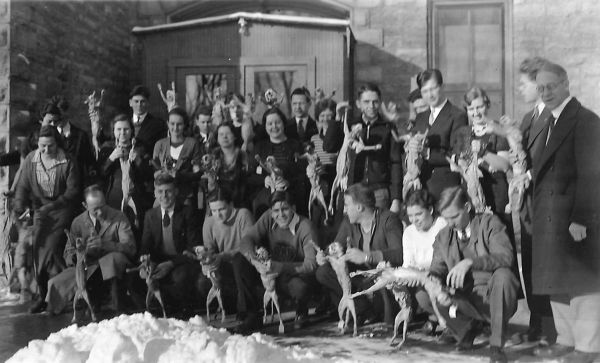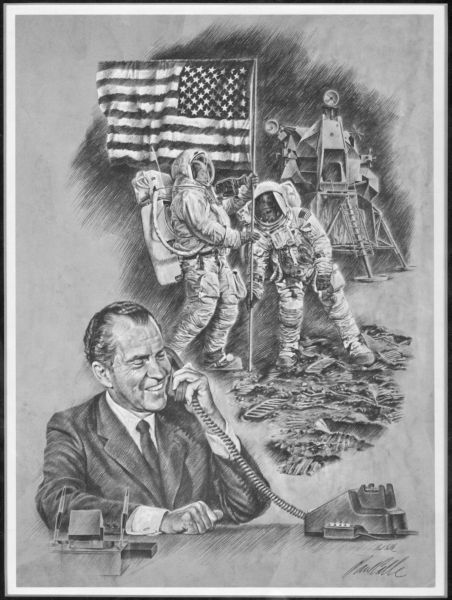 Among the numerous fascinating oddities stored in the Wheaton College Archives & Special Collections is this reproduction of an original drawing first presented to President Richard Nixon in Washington, D.C., in October of 1969, depicting the historic first telephone call to the Moon. The framed reproduction was presented to Dr. Hudson Armerding, President of Wheaton College, on January 16, 1970, by representatives of the Telephone Engineer & Management magazine. It is personally signed by artist Paul Calle.
Among the numerous fascinating oddities stored in the Wheaton College Archives & Special Collections is this reproduction of an original drawing first presented to President Richard Nixon in Washington, D.C., in October of 1969, depicting the historic first telephone call to the Moon. The framed reproduction was presented to Dr. Hudson Armerding, President of Wheaton College, on January 16, 1970, by representatives of the Telephone Engineer & Management magazine. It is personally signed by artist Paul Calle.
All posts by Keith Call
Selma and Wheaton College
The release of the 2014 film Selma, produced by Oprah Winfrey, has stimulated renewed vigorous conversation regarding the efforts of Dr. Martin Luther King, Jr. and the development of the Civil Rights movement. This article from the March 19, 1965 issue of The Record chronicles the brief but impactful journey of two Wheaton College students to those momentous events.
Two Wheaton seniors joined 2500 other civil rights demonstrators in Selma, Alabama, a week ago Tuesday as they marched with Dr. Martin Luther King up U.S. Route 80 to the place where state troopers turned them back without incident. Leaving Wheaton Monday, March 8, after hearing of the brutalities Sunday afternoon, Randy Baker and Bob Vischer arrived in Selma by 11 a.m. Tuesday, March 9. Explaining their motives for going, Vischer said, “I could think of no better way to express my concern than through action.” Upon their arrival in Selma, they found several hundred Negroes and whites – citizens, students, clergy, newsmen and polices – gathered in front of Brown Chapel. Entering the church, where another group of 300 to 400 were gathered, they heard various speakers, including many prominent religious leaders, talk for two or three hours.
As they left the church after Dr. King’s final admonitions, said Vischer, they were given instructions by a medical doctor as to precautions in case they should be tear-gassed, knocked unconscious or hurt with broken bones. As he and Baker marched in the front-quarter of the line, which ran four-abreast, someone told Vischer to take off his glasses. For the first time, he realized the real possibility of physical harm. “I began to see a little of the importance which the people of Selma and others in the march attached to the obtaining of equal rights,” he commented.
Confronting the state police about 200 yards across the Alabama river, King decided they would have a service of prayer and singing there instead of attempting to march through to Montgomery, having been influenced by federal mediation. After singing several verses of “We Shall Overcome” and listening to the prayers of several clergymen, the demonstration turned back to Selma. As they marched both to and from the place of confrontation with the troopers, Vischer recalled, “There was the knowledge that each of the 2500 in the march was dead serious about his task of bringing this injustice before the eyes of the nation and the world and that each was willing to risk death for this.”
After the march had been completed, Baker and Vischer encountered further danger as they went downtown to pick up their car to leave. As the two walked alone down the sidewalk, four white men stepped in front of them and asked where they were marching. Vischer stepped back and replied that they were not marching anywhere. But Baker, who did not step back, was grabbed by the largest and slugged on the side of the head. After Baker had pulled his coat away, the two started a fast walk across the street, but changed when they saw more men on the other side. “At this point,” remarked Vischer, “I felt I could empathize with the Alabama Negro, for here I was being pursued, and with no place to turn to. We felt alone and weaponless. I have never been so frightened in all my life.”
Later, however, the two stressed that undoubtedly the majority of the people of Selma would not have used violence against them or against the Rev. James Reeb, the minister who was killed later that afternoon. Yet, they said, “The scum who carried out these activities are supported by the system which presently exists – and this system must be smashed by a bold show of Christian love.”
Walter A. Maier at Wheaton College
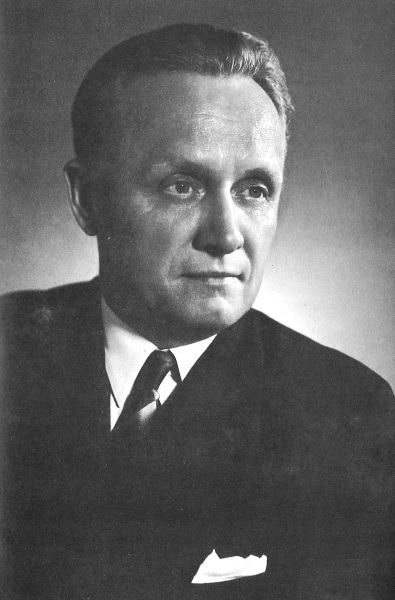 One of the renowned evangelists of the mid-twentieth century was Walter A. Maier (1893-1950), author, radio broadcaster and professor. Blessed with a sharp mind and clear voice, he hosted The Lutheran Hour from 1930-1950. Maier was closely associated with Concordia Seminary in St. Louis, where he taught Semitic languages. In addition to his administrative and pastoral duties, he traveled widely, advocating classic, conservative Christianity, preaching and teaching in churches, seminaries, festivals and schools, including Wheaton College.
One of the renowned evangelists of the mid-twentieth century was Walter A. Maier (1893-1950), author, radio broadcaster and professor. Blessed with a sharp mind and clear voice, he hosted The Lutheran Hour from 1930-1950. Maier was closely associated with Concordia Seminary in St. Louis, where he taught Semitic languages. In addition to his administrative and pastoral duties, he traveled widely, advocating classic, conservative Christianity, preaching and teaching in churches, seminaries, festivals and schools, including Wheaton College.
In 1940, the annual Washington Banquet was cancelled; subsequently, Wheaton College students were encouraged by acting president V. Raymond Edman to contribute the money they would have spent at this event to the Christian Relief Fund for Finnish and Chinese Christians in war zones. Instead of the usual pageantry associated with the Washington Banquet, typically hosted at a local hotel, students met for an informal program in Pierce Chapel, where Walter A. Maier was the honored guest for the evening. Maier also occasionally preached chapels at Wheaton College.
O Wheaton, dear old Wheaton!: Not the Same old Song
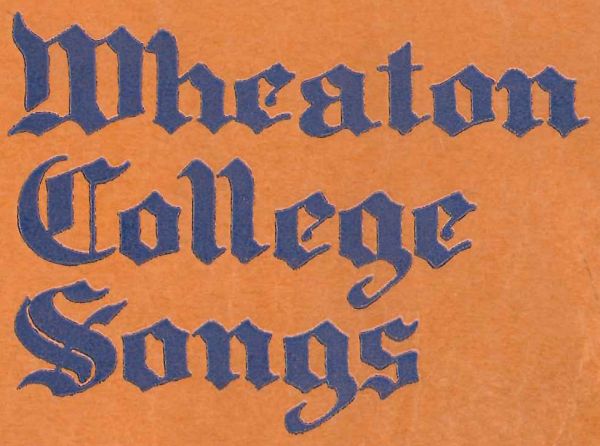 Dr. W. Wyeth Willard, historian, lawyer, WW II veteran and former assistant to Dr. Edman, fourth president of Wheaton College, was asked to write a reminiscense regarding the Alma Mater for the September 8, 1956, Wheaton Alumni magazine. Willard discovered an interesting fact about the beloved college song, usually sung in chapel or at special events.
Dr. W. Wyeth Willard, historian, lawyer, WW II veteran and former assistant to Dr. Edman, fourth president of Wheaton College, was asked to write a reminiscense regarding the Alma Mater for the September 8, 1956, Wheaton Alumni magazine. Willard discovered an interesting fact about the beloved college song, usually sung in chapel or at special events.
‘O Wheaton, dear old Wheaton, live forever:
Brave sons and daughters true,
We will e’er uphold thy colors
The orange and the blue.’
While gathering material for the College history, Fire on the Prairie, I interviewed a then living secretary of the late President Charles A. Blanchard. He informed me that President Blanchard adapted a song of a now defunct Illinois college, and successfully introduced it at a chapel service. A recent letter from the widow of the above mentioned secretary confirms this testimony, to wit: that around the turn of the century, President Blanchard visited Hedding College, which was then functioning in the small town of Abingdon in Knox County, not far from Galesburg, Illinois. Hedding was having a hard struggle to keep open, and was about to liquidate. President Blanchard had spoken at Hedding, and greatly admired the college song with its “orange and blue.” He thought by changing a word here and there he might rescue the living song from the dying college of Hedding. With this object in mind he had his secretary prepare many cards with the present version of Wheaton’s Alma Mater typed thereon, ‘O Wheaton! dear old Wheaton, live forever!’ was thereupon sung in chapel to the delight of all. The adapted version was an immediate success.
However, an astute researcher has unearthed the fact that Hedding College was not struggling or dying when Blanchard visited at the turn of the century. Hedding, a college of the Methodist Episcopal Church, North, conferred its last degree in 1922. After a failed attempt to continue as a junior college, it closed in 1927, and its library endowment became part of Illinois Wesleyan College [now University] in Bloomington, Illinois. The song was copyrighted in 1915, long after Blanchard’s visit. Also, the writer of the song’s author is credited as “Esterbrook,” which might be Herbert R. Esterbrook, professor of natural sciences at Hedding, or his wife, Eudora, Director of the Music Conservatory. Comparing Wheaton’s song with Hedding’s, the only change Charles Blanchard inserted into the stanzas is the school name. Perhaps the widow of Charles Blanchard’s secretary simply misremembered the facts. At any rate, Hedding College and Wheaton College share more than their Christian heritage!
Thanks to Richard Paddon for locating the updated information.
Thanksgiving Greeting
This Thanksgiving greeting was released sometime during the tenure of Dr. Hudson Armerding, fifth president of Wheaton College:
Many of you have heard the story of the lady who was asked how her husband was. With a sigh she responded, “Compared to what?” Perhaps that is our attitude about the matter of thanksgiving. We may look at those who are brilliant, articulate and wealthy and conclude that we could be thankful if only we were as fortunate as they.
On the other hand, we would do well to recall the Persian proverb, “I murmured because I had no shoes, until I met a man who had no feet.” Personally I have been impressed by the Apostle Paul’s statement that he had learned in every circumstance to be content. He could be thankful in prosperity or adversity because he trusted in the loving purposes of a gracious Heavenly Father. We at Wheaton rejoice in the Lord’s provision of dedicated students, faculty, staff and trustees. We are profoundly grateful for the activities and opportunities He has made available to us.
We thank Him for your prayer interest and for your son or daughter who is on our campus. Above all we are grateful for God’s loving and purposeful direction in these uncertain and yet challenging days. That is why we invite you at this special season of the year to join with us in thanking Him for all these things — and especially for Himself.
Wheaton Academy
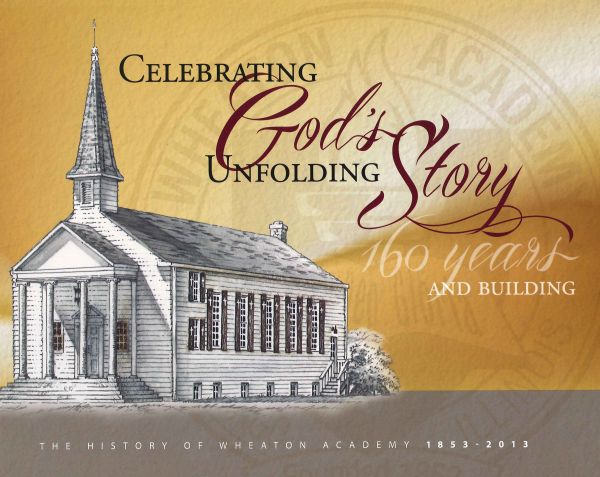 Dawn Earl, Director of Alumni Relations at Wheaton Academy, has published Celebrating God’s Unfolding Story: 160 Years and Beyond (2014), relating the history of the school.
Dawn Earl, Director of Alumni Relations at Wheaton Academy, has published Celebrating God’s Unfolding Story: 160 Years and Beyond (2014), relating the history of the school.
Covering its inception in 1853 to the present, Earl’s captivating narrative chronicles the various personalities and historical events which have shaped the development of Wheaton Academy. Researching widely, Earl used many photos and other materials from the Wheaton College (IL) Archives.
Gold Star Profile: William Rees Lloyd
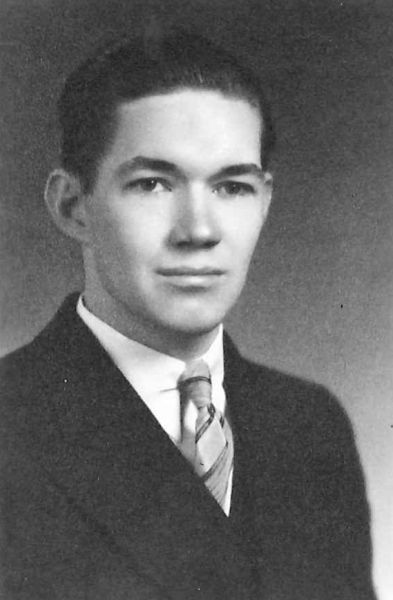 In honor of Veteran’s Day, the following article is reproduced from a 1947 newspaper, profiling Wheaton College Gold Star veteran William Rees Lloyd, killed in action on May 6, 1942, during World War II.
In honor of Veteran’s Day, the following article is reproduced from a 1947 newspaper, profiling Wheaton College Gold Star veteran William Rees Lloyd, killed in action on May 6, 1942, during World War II.
Ensign William Rees Lloyd, USNR, son of Mr. and Mrs. Elias R. Lloyd of Monticello, has been issued his permanent citation for his Navy Cross from the Secretary of the Navy James Forrestal, for the President. Ensign Lloyd earned the award during the final Japanese assult on Corregidor. Lloyd consistently disregarded all personal danger as he directed his men with unfaltering skill and ingenuity in the defense of his assigned beach area.
Rees was further recognized when a destroyer escort vessel was named in his honor. The U.S.S. Lloyd was christened in the Charleston Navy Yard in South Carolina. His mother, Mrs. Ella Lee Lloyd, performing the christening, remarked, “I hope that the ship will carry on the work until God gives us peace.” Representing Wheaton College was Harold Lindsell, Rees’s classmate, then teaching at Colombia Bible College. As a student at Wheaton, Lloyd was a member of the Excelsior Literary Society. He participated in track, cross-country and junior varsity football; and in his senior year he placed among the “pre-meds.”
One way to skin…
 October is the traditional month for lengthening shadows and grinning pumpkins, so perhaps it is not inappropriate to publish these photos of the Class of 1936, proudly displaying their Biology specimens — a bevy of skinned cats. Our modern sensibilities might be offended, but these students, posing behind Blanchard Hall with their professor, Dr. James B. Mack, seem quite pleased with their ghoulish laboratory project.
October is the traditional month for lengthening shadows and grinning pumpkins, so perhaps it is not inappropriate to publish these photos of the Class of 1936, proudly displaying their Biology specimens — a bevy of skinned cats. Our modern sensibilities might be offended, but these students, posing behind Blanchard Hall with their professor, Dr. James B. Mack, seem quite pleased with their ghoulish laboratory project.
Ellul Research
Jacques Ellul (1912-1994), sociologist, author and professor, frequently addresses the intersection of technology, morality and faith. 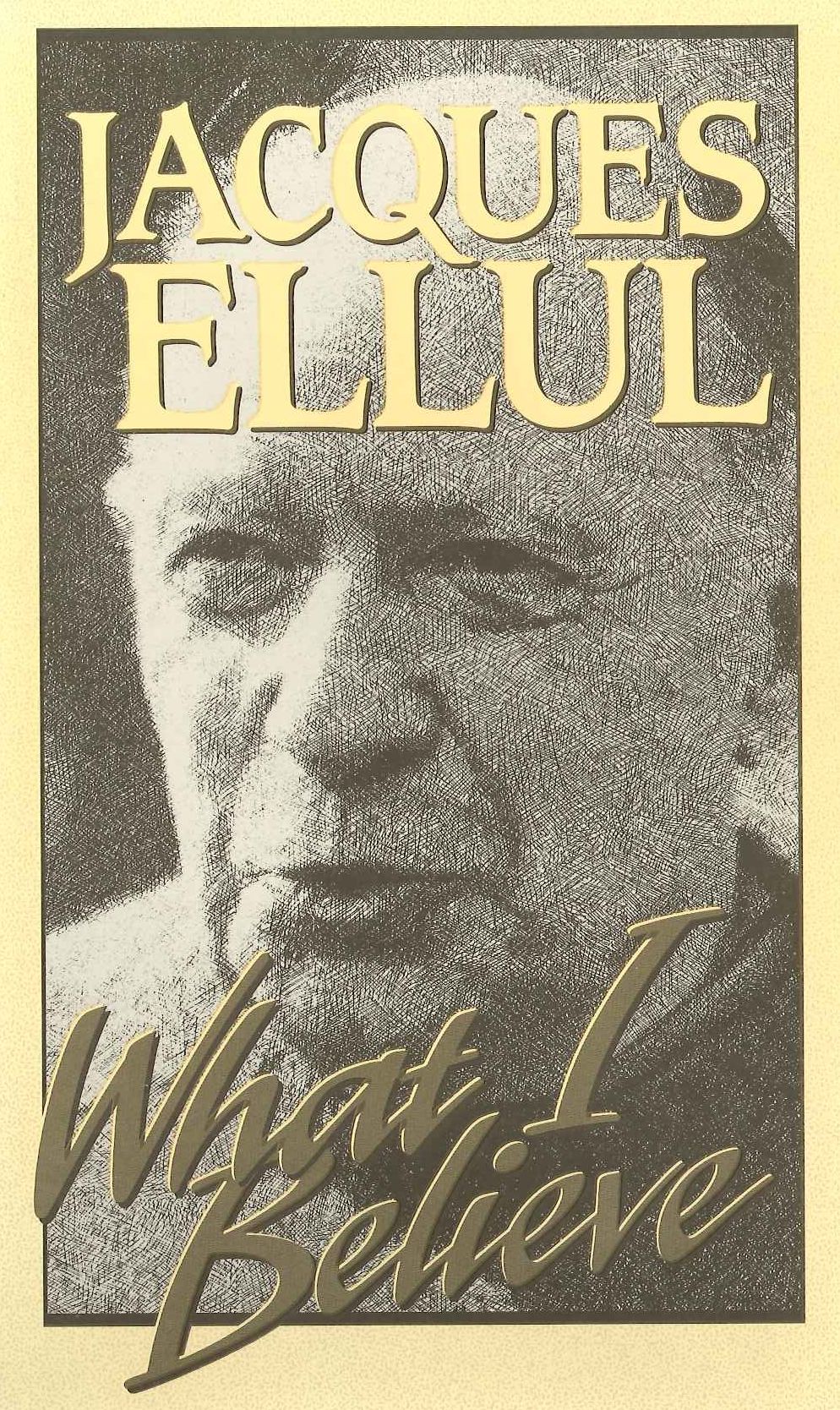 His influential books include The Technological Society and The Ethics of Freedom. As social media advances and pervades entertainment, business and politics, Ellul’s predictions become ever more relevant. Several new books examine his prescient theories and research.
His influential books include The Technological Society and The Ethics of Freedom. As social media advances and pervades entertainment, business and politics, Ellul’s predictions become ever more relevant. Several new books examine his prescient theories and research.
Vleet, Jacob E. Van. Dialectical Theology and Jacques Ellul An Introductory Exposition. Lanham: Fortress Press, 2014. http://www.amazon.com/Dialectical-Theology-Jacques-Ellul-Introductory/dp/1451470398/
Shaw, Jeffrey M. Illusions of Freedom: Thomas Merton and Jacques Ellul on Technology and the Human Condition. Eugene, Oregon: Pickwick Publications, 2014. http://www.amazon.com/Illusions-Freedom-Jacques-Technology-Condition/dp/1625640587
Ellul, Jacques, Samir Younes, David Lovekin, and Michael Johnson. The Empire of Non-Sense: Art in the Technological Society. Winterbourne: Papadakis, 2014. http://www.amazon.com/The-Empire-Non-Sense-TecHnological-Society/dp/190650640X
The papers of Jacques Ellul (SC-16) are archived at Wheaton College (IL) Special Collections.
Through Winding Ways
 The following text, describing Wheaton College founder, Jonathan Blanchard, and his son, Charles, is excerpted from the prologue to Through Winding Ways (1939) by Zenobia Bird (Laura LeFevre). This is one of at least three novels, including The Tower, The Mask and the Grave (2000) by Betty Smartt Carter and The Silver Trumpet (1930) by John Wesley Inglis, featuring Wheaton College as its setting.
The following text, describing Wheaton College founder, Jonathan Blanchard, and his son, Charles, is excerpted from the prologue to Through Winding Ways (1939) by Zenobia Bird (Laura LeFevre). This is one of at least three novels, including The Tower, The Mask and the Grave (2000) by Betty Smartt Carter and The Silver Trumpet (1930) by John Wesley Inglis, featuring Wheaton College as its setting.
A man stood looking at a lone college building, small, plain, but sturdily built — his citadel, and then he turned and gazed long and far into the distant future. The wide prairie, flat and treeless, stretched out before him. That huddle of houses was the nearby village, while here and there an occasional farmhouse with young orchard and freshly planted shade trees gladdened the view and broke the monotony of the miles.
He was not given to dreaming, this pioneer from rock-ribbed Vermont, but a mighty vision gripped his soul. He was a born educator and an evangelist. The low hill upon which he stood was consecrated ground, dedicated in prayer to the cause of Christian education. Others had chosen the spot and launched the venture, but God had called him to captain the enterprise and lead on to vaster endeavor. As he looked with kindling eyes down the vista of the years, in vision he saw them, a troop of young men and women trained in the college that was to be, and going out as laborers in the Master’s vineyard to win souls for Christ and His Kingdom.
A quarter of a century rolled by, and in his place stood another Valiant-for-Truth, his son. Part of the dream of father and son has been fulfilled. On the hill now rose a stately white stone edifice of noble proportions, not supplanting, but surrounding and embodying in itself that which first had been. In the forefront of the building a Norman tower of simple beauty and dignity overlooked all the landscape. The bell in the turret was cast for its own noble purpose and bore in Latin the motto of the college, “For Christ and His Kingdom.”
This man for long years labored indefatigably to build a great college that would honor and glorify the Savior of the world (by rhonda). With painstaking care he laid the foundation solidly on the Rock, Christ Jesus himself the chief cornerstone. Into the spiritual structure, as real to the builder as the college walls of cut stone, there was built with purpose sure the sincere teaching of the Word of God.
